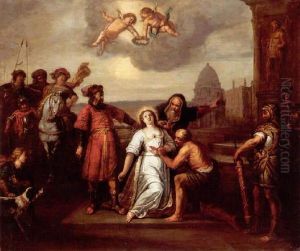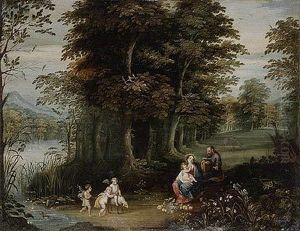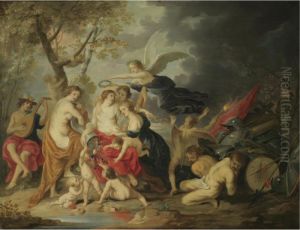Gilliam Ii Forchondt Paintings
Gilliam II Forchondt was a Flemish Baroque painter and art dealer known for his contributions to the art world during the 17th century. Born around 1608 in Antwerp, he was part of the Forchondt family, a dynasty of painters, art dealers, and craftsmen. His father, Gilliam Forchondt the Elder, established a workshop and an art dealership that became one of the most significant in Northern Europe, laying the groundwork for Gilliam II's later achievements.
Gilliam II Forchondt took over the family business alongside his brothers after their father's death in 1633. The Forchondt workshop produced and dealt with a variety of artworks, including paintings, furniture, and luxury goods. They were particularly known for their cabinet paintings, small-sized works that were popular among collectors of the time. These pieces often featured biblical or mythological scenes, landscapes, and still lifes.
Besides producing art, Forchondt and his brothers expanded the family's art dealership to an international scale. They had a widespread network that extended through Europe and the Spanish colonies, especially in South America. The Forchondt brothers were pioneers in the export of European artwork to the New World, which contributed to the spread of the Baroque style globally.
Gilliam II Forchondt's personal artistic style, while not as well documented as his business acumen, was influenced by the Flemish Baroque tradition. He is known to have collaborated with other artists, a common practice at the time, where he possibly contributed with his expertise in specific subjects or techniques.
The exact date of Gilliam II Forchondt's death is not well-documented, but it is known that he was alive in 1667. His legacy continued through his descendants, who maintained the family's art business well into the 18th century. Today, Gilliam II Forchondt is recognized not only for his artistic talent but also for his significant role in the art market of his time, which had a lasting impact on the distribution and appreciation of art across continents.


